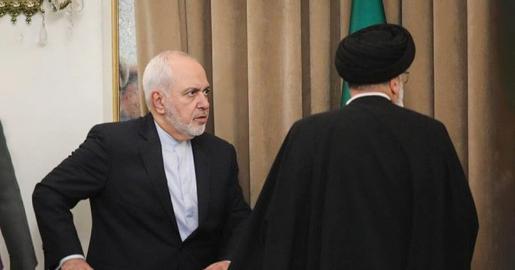For close to two years, members of the international community, horrified, shocked and angered by the repeated acts of violence and murder committed by ISIS extremists, have been quick to point out the group’s moral bankruptcy, and its failure to subscribe to any kind of legitimate religious or moral doctrine. But, on December 15th 2014, ISIS gave the world an idea of the moral code it follows, or claim to follow. So with the publication of the ISIS’s Islamic Penal Code, did ISIS offered some sort of clarification, addressing the question of how it metes out its horrific form of justice, at least to some extent?
According to the Middle East Media Research Institute, on December 15, 2014, ISIS outlined the penal code it follows in a document published on the Jihadi Media Platform forum (alplatformmedia.com).
“ISIS said it published the document as a warning and a reminder to the people living under its rule," the Middle East Media Research Institute wrote. “It also reaffirmed its commitment to enforce it vigilantly.” The institute said the document set out its argument in line with “various Koranic verses emphasizing the need for Muslims to adhere to Sharia, while noting that those who do not follow it are considered unbelievers.”
ISIS’ horrific punishments have included: beheading one of its own fighters for spying and embezzlement; crucifying a 17-year-old boy for apostasy; ordering a women be stoned to death on charges of adultery; and throwing a man off a building as punishment for homosexuality. These and other punishments have been carried out based on ISIS’s Islamic Penal Code, published under the title بیان الحدود , or “The Clarification regarding the Hudud.” Hudud, the plural of Hadd, refer to punishments outlined in the Koran and hadith — proclamations by the Prophet Mohammad — regarding crimes against God.
But just how close is ISIS’ penal code to that of the Islamic Republic of Iran’s? Looking at the two, one cannot help but notice the similarities.
The Laws of Iran vs. the Laws of ISIS
Blasphemy
According to the Islamic Penal Code of ISIS, the punishment for blasphemy against (or insulting) God, the Prophet Mohammad and Islam is death. The punishment for adultery for a married adulterer/adulteress is stoning, and for an unmarried adulterer/adulteress, it is 100 lashes and one year in exile. Punishment for sodomy (or male homosexuality) is death. The punishments for qazf (false accusation of sexual offences) and for drinking alcohol is 80 lashes.
Apostasy, Spying, and Banditry
The punishment for apostasy is death — the same punishment handed down for the crime of “spying for the unbelievers” and for “banditry” or highway robbery. If an individual is found guilty of banditry, and that banditry has involved theft and results in murder, the guilty party will face death by crucifixion; if he or she is found guilty of banditry that has only involved murder and not theft, the punishment is death, though it is not clear how the punishment will be carried out; if the banditry only involves theft but does not result in murder, the punishment is amputation of the right hand and the left leg; and if the banditry causes terror or fear in the public, the punishment is exile.
All of the above crimes and punishments are also part of the Hudud section of Iran’s Penal Code.
According to Article 262 and 263 of Iran's code, the punishment for insulting the prophet, any of the imams of Islam or Fatima, the prophet’s daughter, is death by hanging.
Iran’s Penal Code also sets out the punishment for adultery: Stoning for a married adulterer/adulteress and 100 lashes for an unmarried adulterer/adulteress. The punishment is stepped up to execution in cases where adultery occurs between blood relatives forbidden to marry. If a stepmother and stepchild engage in adultery, the male stepson will be sentenced to death, as will a non-Muslim man who engages in adultery with a Muslim woman. And if adultery takes place through coercion (ie rape),the rapist will be sentenced to death.
As with the ISIS code, homosexuality is forbidden under Iran’s penal code. But unlike the ISIS code, which stipulates that both people taking part in homosexual acts should be condemned to death, Iran’s code differentiates between the “passive” party and the “active” party engaging in homosexual activity. Under Iran’s Islamic law, the passive person is punished with death, while the active person receives 100 lashes as punishment. This punishment changes when the active individual is married, or if sodomy is carried out by force. In those cases, the punishment is death.
The differentiation between the two types of punishments possibly stems from Iran’s patriarchal culture, which allows for more severe punishment for the person who has been seen to not have maintained his so-called masculinity and conformed to a submissive role.
When it comes to qazf (false accusation of sexual offences) and drinking alcohol, under Iran’s Islamic code, the punishment is 80 lashes.
Under Iran’s penal code, theft is sometimes considered a Hadd crime, which, as under ISIS’ code, results in severe punishments, such as the amputation of limbs and the death penalty; in some cases, it is considered to be a Tazir crime, which results in a less severe punishment, such as imprisonment or flogging. In order for a theft to be considered a Hadd crime, it must meet certain criteria, including that the property in question should have been kept in an appropriate secure place (for example, jewelry should be kept in a secure, locked box, and if a thief breaks into this box, the crime is considered to be a Hadd crime); the value of the stolen property should not be less than a certain weight (4.5 Nokhod [a traditional unit of weight] of coined gold [equal to 0.87 g]); and the thief should not be the father of the owner of the property.
In Iran, the punishment for theft classified as a Hadd crime is amputation of the right hand for the first offence, amputation of the left foot for the second offence, life imprisonment for the third offence, and the death penalty for the fourth offence.
Unlike ISIS’ code, Iran’s penal code does not specifically address the crime of apostasy. However, in cases of Hudud crimes not mentioned in the penal code, like apostasy, Article 220 states that judges are required to abide by Article 167 of the constitution —meaning that they must hand down judgments based on authoritative Islamic sources and authentic fatwas if a codified law does not exist for that crime. Since, according to many fatwas, the punishment for apostasy is death, judges can legally hand down death sentences for apostasy. However, even though in the past various converts (including Yousef Nadarkhani, Saeed Abedini and Behrouz Sadequi Khanjani) have been prosecuted under the charge of apostasy, by the time many of these cases came to completion, the charges had changed: Instead of apostasy, these religious converts ended up being charged with security-related charges. Espionage, one of the most frequently used security-related charges, can come with a prison sentence of up to 10 years. If a member of the military is found guilty of espionage, he or she can face execution. So it would seem that, unlike ISIS, the Iranian government is reluctant to acknowledge — and even tries to hide — the fact that it punishes its people for changing their religion.
Article 279 of Iran’s Penal Code defines Moharebeh as “drawing a weapon on the life, property or chastity of people or to cause terror as it creates the atmosphere of insecurity.” Article 281 considers three groups to be mohareb, or people who commit moharebeh: Bandits, thieves, and smugglers who resort to weapons and disrupt public security or the security of the roads.
In Iran, the punishment for Moharebeh is one of the following: execution, crucifixion, amputation of the right hand and the left leg, and banishment.
Seizure of Property
ISIS regularly confiscates property belonging to people living in the cities it conquers. These confiscations form part of ISIS’ revenue. After raiding museums and ancient cities, ISIS sells antiques seized there on the black market. On various occasions, ISIS also demands taxes. For example, an individual may be required to pay taxes if his beard is too long or too short, if he is in possession of a forbidden item, or if he does not possess proper documentation.
Authorities in Iran also regularly confiscate property. The main mandate of the Executive Committee of the Imam Khomeini's Order (a committee established in 1989 by the order of the Supreme Leader Ruhollah Khomeini) is to identify and confiscate the property of individuals with connections to the political system in place before the 1979 Islamic Revolution. However, in practice, the committee not only confiscates the assets and holdings of individuals linked to the previous regime, it also confiscates assets and holdings belonging to Jewish people and to Iranians who have moved abroad.
Property seizure in Iran can also be carried out in line with various codes laid out in the constitution. According to Article 49 of the constitution, “The government has the responsibility of confiscating all wealth accumulated through usury, usurpation, bribery, embezzlement, theft, gambling, misuse of endowments, misuse of government contracts and transactions, the sale of uncultivated lands and other resources subject to public ownership, the operation of centers of corruption, and other illicit means and sources, and restoring it to its legitimate owner; and if no such owner can be identified, it must be entrusted to the public treasury.” This provision has mainly been used to carry out punishment against people with links to the pre-revolution regime.
So despite Iran's unfaltering military support for the governments of Syria and Iraq, and its incessant harsh criticism of ISIS, evidence suggests that Iran's legal system bears disturbing resemblance to that of ISIS, at least in part. The Iranian government will of course want to avoid such comparisons. But those calling for reform in Iranian law may find parallels useful in making the case to those members of the government open to listening, however resistant the regime may be to such change.
Related articles:
visit the accountability section
In this section of Iran Wire, you can contact the officials and launch your campaign for various problems

























comments